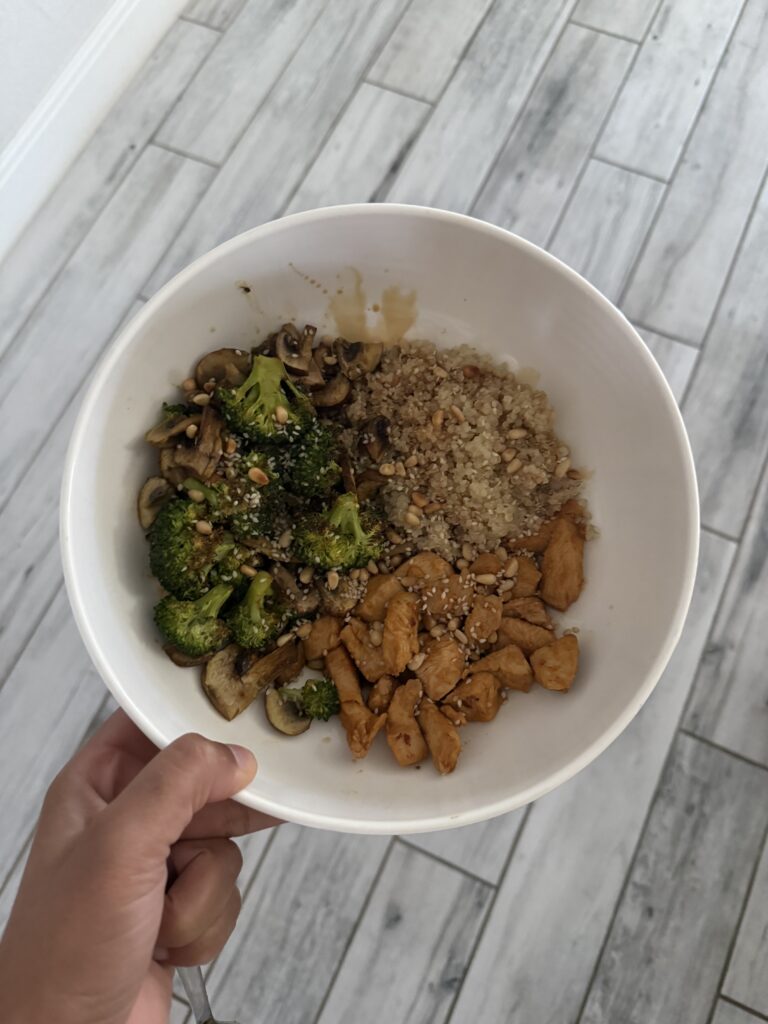In today’s fast-paced world, building a balanced meal can feel overwhelming. With so many food choices and nutrition advice available, it’s easy to get confused. However, eating well doesn’t have to be complicated. A balanced meal should nourish your body, provide sustained energy, and be easy to prepare. Let’s break it down into simple steps and practical tips to make healthy eating effortless.
What is a Balanced Meal?
A balanced meal includes the right mix of macronutrients (carbohydrates, proteins, and fats) along with essential vitamins and minerals. The goal is to provide your body with everything it needs to function optimally. Here’s how to structure your plate:
- Protein (30-40%) – Essential for muscle repair, satiety, and overall health. Choose lean proteins like chicken, eggs, fish, tofu, paneer, lentils, or Greek yogurt.
- Carbohydrates (40-50%) – The primary energy source for your body. Opt for complex carbs like whole grains (brown rice, quinoa, oats), vegetables, and legumes to keep blood sugar stable.
- Healthy Fats (20-30%) – Necessary for brain function and hormone production. Include sources like avocado, nuts, seeds, olive oil, and fatty fish.
- Fiber (at least 25g per day) – Supports digestion and keeps you full longer. Get fiber from vegetables, whole grains, and legumes.
- Micronutrients – Essential vitamins and minerals from colorful fruits and vegetables.

Tips to Make Healthy Eating Easy
1. Follow the Plate Method
- Fill half your plate with non-starchy vegetables (spinach, broccoli, bell peppers).
- Fill one-quarter of your plate with lean protein (chicken, tofu, eggs).
- Fill one-quarter of your plate with whole grains or starchy vegetables (brown rice, quinoa, sweet potatoes).
- Add a small portion of healthy fats (olive oil dressing, avocado, nuts).
2. Meal Prep for Success
- Batch cook proteins like grilled chicken, boiled eggs, or paneer for easy meals.
- Chop and store vegetables in advance for quick salads and stir-fries.
- Cook grains in bulk (quinoa, brown rice) for mix-and-match meals.
3. Keep it Simple
- Stick to 5-ingredient meals using whole, minimally processed foods.
- Use spices and herbs instead of sugary sauces for flavor.
- Keep healthy snacks like Greek yogurt, hummus, and roasted chickpeas on hand.
4. Balance Your Macros Without Overthinking
- If you eat a carb-heavy meal, add protein and fats to balance it (e.g., oats with nuts and Greek yogurt).
- If you eat a high-protein meal, ensure you have enough fiber-rich carbs (e.g., grilled chicken with quinoa and roasted veggies).
5. Hydration is Key
- Aim for at least 8 glasses of water daily.
- Infuse water with lemon, cucumber, or mint for variety.
- Limit sugary drinks and excessive caffeine.

Sample Balanced Meal Ideas
- Breakfast: Scrambled eggs with whole wheat toast, avocado, and sautéed spinach.
- Lunch: Grilled chicken with quinoa, roasted broccoli, and tahini dressing.
- Dinner: Paneer stir-fry with brown rice and a side of cucumber salad.
- Snack: Greek yogurt with chia seeds and berries.
Final Thoughts
Building a balanced meal doesn’t require fancy ingredients or complex meal plans. By following these simple guidelines, you can create nutritious, delicious meals effortlessly. The key is consistency—small daily changes lead to long-term health benefits. Prioritize whole foods, listen to your body’s needs, and enjoy the process of nourishing yourself!







Leave a Reply